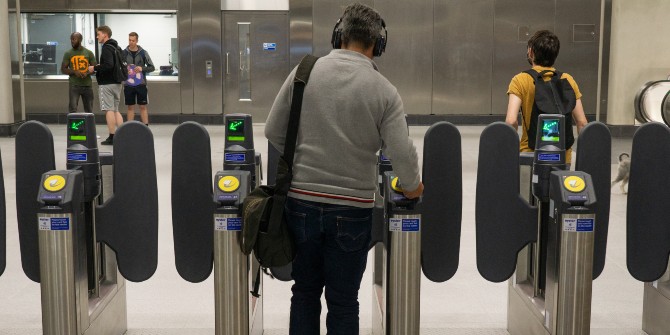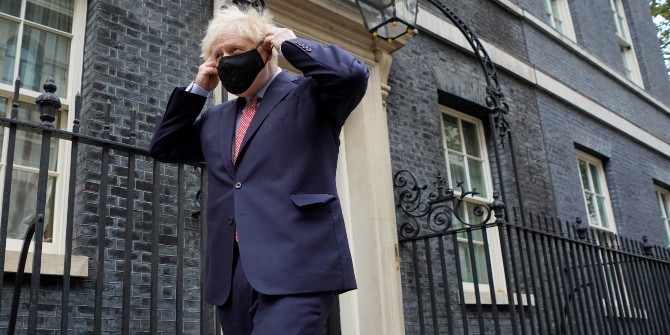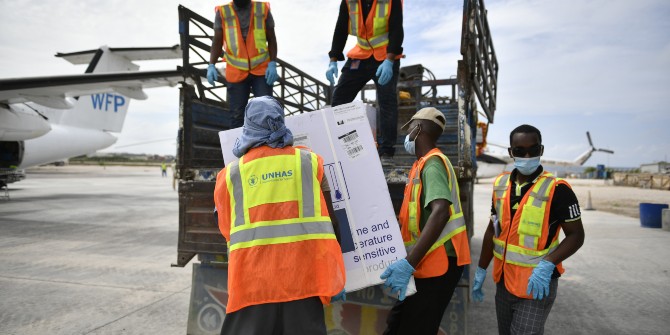Ministers want Londoners to pay for a significant part of the catastrophic shortfall in fare revenue that their transport system suffered during the pandemic. Tony Travers (LSE) says that giving the mayor additional sources of revenue would reduce City Hall’s reliance on the Treasury and give the capital some much-needed autonomy.
Transport for London (TfL) has suffered a catastrophic drop in revenues during the pandemic. Fare income dropped by £3.5-4 billion in 2020, and in 2021 the network is expected to receive about half as much in revenues as it normally would. Consequently, TfL has relied on government grants to continue operating. The situation has led to an enormous amount of tension between City Hall and the government, largely because the latter has spotted a political opportunity in the way it negotiates with Labour’s London mayor, Sadiq Khan. But the fact is that the fare box has not only not recovered, but is unlikely to do so for five to ten years into the future, and if half of us work at home half the time from now on TfL will only receive 75-80% of its pre-COVID income from commuters. It could even be lower than that.
How will the gap be plugged? It is not the first time that the issue of how to fund London has been addressed. Both Khan and his predecessor Boris Johnson – at least, when he was mayor – supported the findings of the two London Finance Commissions (LFCs), the first of which was set up in 2013.
The Commissions noted that London enjoys far less fiscal autonomy than comparable cities in other countries. The tax yield of all UK sub-national government represents less than 2% of GDP, or 5% of all tax receipts. In France, for example, it accounts for four times as much. Fares aside, London only has the power to raise revenue through the council tax and business rate supplement. Other European cities draw on a range of different levies.
It is time to give London more of the autonomy that its European and North American counterparts enjoy
This is despite the fact that there is no evidence that more fiscal autonomy is associated with less economic growth, and that the public trusts local politicians more than central government.
Accordingly, the two LFCs suggested devolving all property taxes (council tax, non-domestic rates, stamp duty, and property-related capital gains) jointly to the London mayor and the boroughs. London would set all these rates but, to avoid upheaval, the nature of the taxes would not change. Another option was to assign some income taxes to the capital, too, and introduce smaller levies on things like tourism.

Not a great deal happened (at least directly) as a result of the LFCs. However, TfL’s plight is an unexpected opportunity to revisit some of the Commission’s findings, particularly if ministers insist that the funding gap be met from within London. TfL’s January 2021 Financial Sustainability Plan came up with a number of possibilities for raising the £500 million per year to cover its cost of operation, maintenance and financing (assuming there are no further large economic shocks), including:
- Extending the congestion charge
- Non-domestic rates surcharge
- Higher council tax
- VAT or sales tax levy (raised from 20% to 20.5%)
- Retaining London’s portion of vehicle excise duty (favoured by Khan, but not by central government)
- Employment levy for larger businesses (0.4% of salaries)
- A Greater London boundary charge, possibly of £5.
These changes need not be temporary. If City Hall received two of these income streams, and fare revenue subsequently recovered, the extra money could be used to investment in infrastructure – which was an original aim of the LFCs. It would also set a predecent that other city regional mayors could build on. The Commission paved the way for a continued debate about how to make London more fiscally autonomous, but we need to apply the same thinking to other city regions and create a link between the devolution of power and the allocation of resources.
Whitehall is always confident of its ability to organise big projects, but the success of the Oystercard and the congestion charge – both of which were co-ordinated by Transport for London – shows that sub-national government (in this case City Hall) can excel at them. It is time to give London more of the autonomy that its European and North American counterparts enjoy.
This post represents the views of the author and not those of the COVID-19 blog, nor LSE. It is based on Tony Travers’ presentation to Levelling Up and London, a policy roundtable organised by the London Research and Policy Partnership, on 17 September 2021.





